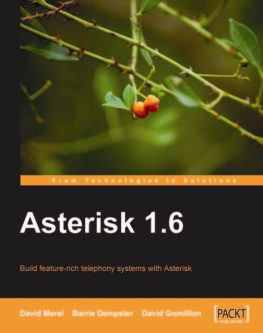Tirado - Build Systems With Go: Everything a Gopher must know
Here you can read online Tirado - Build Systems With Go: Everything a Gopher must know full text of the book (entire story) in english for free. Download pdf and epub, get meaning, cover and reviews about this ebook. year: 2021, genre: Computer. Description of the work, (preface) as well as reviews are available. Best literature library LitArk.com created for fans of good reading and offers a wide selection of genres:
Romance novel
Science fiction
Adventure
Detective
Science
History
Home and family
Prose
Art
Politics
Computer
Non-fiction
Religion
Business
Children
Humor
Choose a favorite category and find really read worthwhile books. Enjoy immersion in the world of imagination, feel the emotions of the characters or learn something new for yourself, make an fascinating discovery.

Build Systems With Go: Everything a Gopher must know: summary, description and annotation
We offer to read an annotation, description, summary or preface (depends on what the author of the book "Build Systems With Go: Everything a Gopher must know" wrote himself). If you haven't found the necessary information about the book — write in the comments, we will try to find it.
Tirado: author's other books
Who wrote Build Systems With Go: Everything a Gopher must know? Find out the surname, the name of the author of the book and a list of all author's works by series.
Build Systems With Go: Everything a Gopher must know — read online for free the complete book (whole text) full work
Below is the text of the book, divided by pages. System saving the place of the last page read, allows you to conveniently read the book "Build Systems With Go: Everything a Gopher must know" online for free, without having to search again every time where you left off. Put a bookmark, and you can go to the page where you finished reading at any time.
Font size:
Interval:
Bookmark:
- v0.2.0 : 2021-05-05 New Cgo chapter, revisited and enhanced explanations, typos, and readers suggestions. Mentions to changes in Go 1.16.
- v0.1.0 : 2021-03-29 First version.
- Part
The first part explores the language from the very basics to advanced tools offered by the standard library. - Chapter
This Chapter is specifically written to motivate newbies to run their first Go program. - Chapter
This Chapter explains all the Go basics including syntax, variables, types, pointers, functions, and execution flow. - Chapter
Go includes powerful native data structures such as arrays and maps. This Chapter extends previous concepts and shows the reader how to write her first data processing solutions. - Chapter
This Chapter describes how Go defines advanced data structures, their associated methods, and interfaces. - Chapter
By exploring how Go uses reflection, the reader can understand the many possibilities of manipulating in-memory data structures. - Chapter
Concurrency is not an easy topic. However, this Chapter demonstrates how Go help developers to design complex solutions effortless. This Chapter covers goroutines, channels, concurrency statements, contexts and more. - Chapter
Any program requires to write or read data to and from different sources. This Chapter explains through examples how Go provides I/O support. - Chapter
The Go standard library offers by default solutions to work with encodings such as CSV, JSON or XML. This Chapter, explains how to use these encodings and others not available by default. - Chapter
This Chapter explains how we can implement our own HTTP clients and servers, and how to deal with requests, cookies, headers or middleware. - Chapter
Templates are pieces of data than can be filled programmatically. This Chapter explains how to define, customize, and use them. - Chapter
This Chapter will show the reader how simple it is to execute testing routines and benchmarks in Go. Additionally, it will introduce the reader how to run coverage tests and execution profiles. - Chapter
This Chapter explains how to manage dependencies in Go and how to document code. - Chapter
Go can operate C structs and functions using Cgo. This Chapter describes how any Go program can use C code and how we can execute Go functions from any program written in C. - Part
The second part of the book is oriented to those readers who feel comfortable with the language and want to explore solutions from the Go ecosystem that can be used to build sophisticated systems. - Chapter
This Chapter reviews what is the protocol buffer serialization format and how to use it with Go. - Chapter
Read this Chapter if you need of a fast, modular, and easy-to-deploy message protocol in your system. This Chapter explains how to define services, servers, clients, streaming, and interceptors. - Chapter
This Chapter shows the reader how to log a program using the powerful Zerolog library. - Chapter
Complex programs require complex command line interfaces. This Chapters, shows the developer how to define and integrate the Cobra library in their projects to obtain professional CLIs with minimal effort. - Chapter
This Chapter introduces how the standard library can be used to manipulate and query data from SQL databases. Additionally, it explores how to use the GORM library for ORM solutions. - Chapter
NoSQL database solutions are quite common and the Go ecosystem offers solutions to work with them. This Chapter, explains how to operate with Apache Cassandra using the GoCQL client. - Chapter
This Chapter reviews the basics of Apache Kafka and overviews three different solutions to interact with this streaming platform.
of this box,
you can find
the code for
this example
Font size:
Interval:
Bookmark:
Similar books «Build Systems With Go: Everything a Gopher must know»
Look at similar books to Build Systems With Go: Everything a Gopher must know. We have selected literature similar in name and meaning in the hope of providing readers with more options to find new, interesting, not yet read works.
Discussion, reviews of the book Build Systems With Go: Everything a Gopher must know and just readers' own opinions. Leave your comments, write what you think about the work, its meaning or the main characters. Specify what exactly you liked and what you didn't like, and why you think so.




